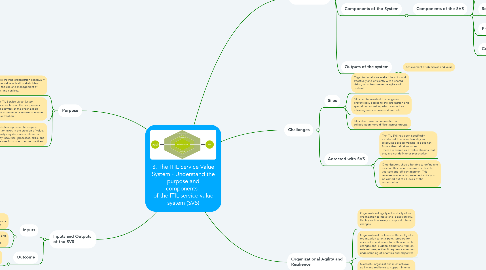
1. Purpose
1.1. To ensure that the organization continually co-creates value with all stakeholders through the use and management of products and services.
1.2. The ITIL Service Value System describes how all the components and activities of the organization work together as a system to enable value creation.
1.3. These activities represent the steps an organization takes in the creation of value. Each activity may draw upon internal or third-party resources, processes, skills, and competencies from one or more practices.
2. Inputs and Outputs of the SVS
2.1. Inputs
2.1.1. Opportunity - represents options or possibilities to add value for stakeholders or otherwise improve the organization
2.1.2. Demand – need or desire for products and services among internal and external consumers
2.2. Outcome
2.2.1. Value – the perceived benefits, usefulness and importance of something
3. Three Main Parts
3.1. To enable value creation, all the components and activities of the organization need to work together as a system
3.2. Inputs to The System
3.2.1. Opportunity and demand
3.3. Components of the System
3.3.1. Components of the SVS
3.3.1.1. Guiding Principles
3.3.1.1.1. Recommendations that can guide an organization in all circumstances, regardless of changes in its goals, strategies, type of work, or management structure.
3.3.1.2. Governance
3.3.1.2.1. The means by which an organization is directed and controlled.
3.3.1.3. Service Value Chain
3.3.1.3.1. A set of interconnected activities that an organization performs to deliver a valuable product or service to its consumers and to facilitate value realization.
3.3.1.4. Practices
3.3.1.4.1. Sets of organizational resources designed for performing work or accomplishing an objective.
3.3.1.5. Continual Improvement
3.3.1.5.1. A recurring organizational activity performed at all levels to ensure that an organization’s performance continually meets stakeholders’ expectations.
3.4. Outputs of the system
3.4.1. Achievement of objectives and value
4. Challenges
4.1. Silos
4.1.1. Organizational silos make it hard to work effectively and efficiently with a shared vision, or to become more agile and resilient.
4.1.2. Silos can be resistant to change and prevent easy access to the information and specialized expertise, which can reduce efficiency and increase cost and risk.
4.1.3. Silos also make communication or collaboration more difficult across groups.
4.2. Adressed with SVS
4.2.1. The ITIL SVS has been specifically architected to enable flexibility and discourage siloed working. It does not form a fixed, rigid structure. There are examples of value streams, but they are not definite or prescriptive.
4.2.2. Organizations should be able to define and redefine their value streams in a flexible, yet safe and efficient manner. This requires continual improvement activity to be carried out at all levels of the organization.
